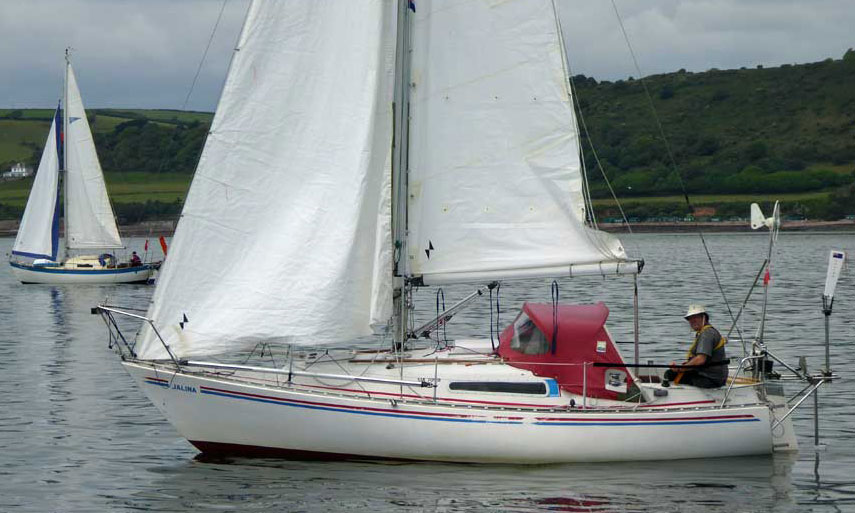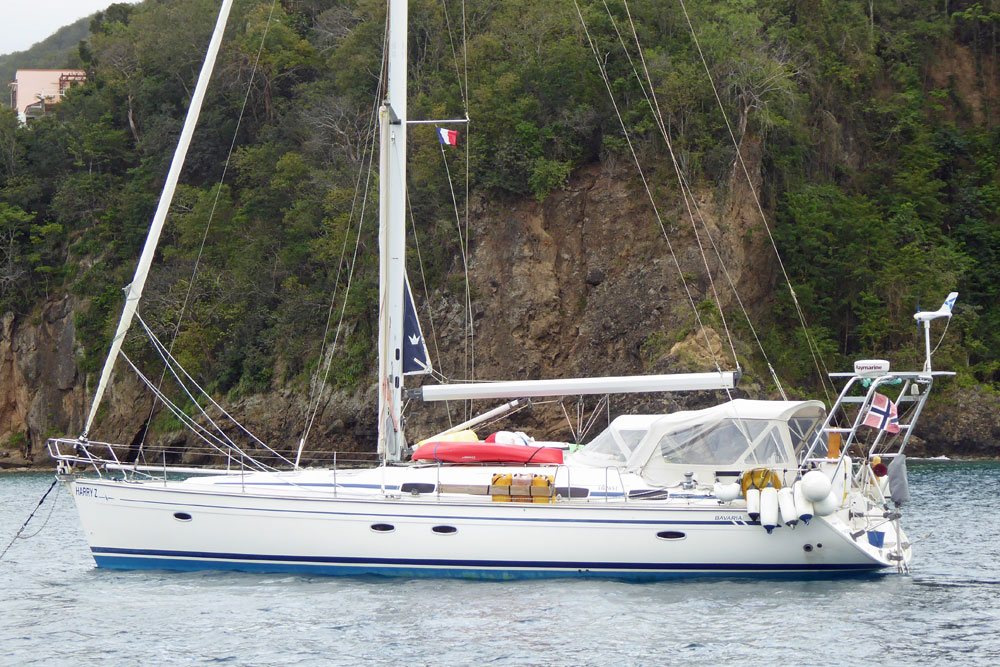- Home
- True Cost of Boat Ownership
The True Cost of Boat Ownership: What It Really Takes to Keep a Sailboat Afloat
In a Nutshell: The purchase price of a sailboat is just the beginning. To truly understand the financial commitment, you need to budget for annual and long-term expenses. A general rule of thumb often cited by industry experts is to budget for 10% of the boat's value annually for maintenance, mooring, insurance, and other operational costs. For a brand new boat, this can be even higher in the first few years due to depreciation and outfitting costs. This figure can vary dramatically based on the boat's size, age, location, and how much work you do yourself. The most significant recurring costs are typically mooring/dockage fees, followed by maintenance and insurance.
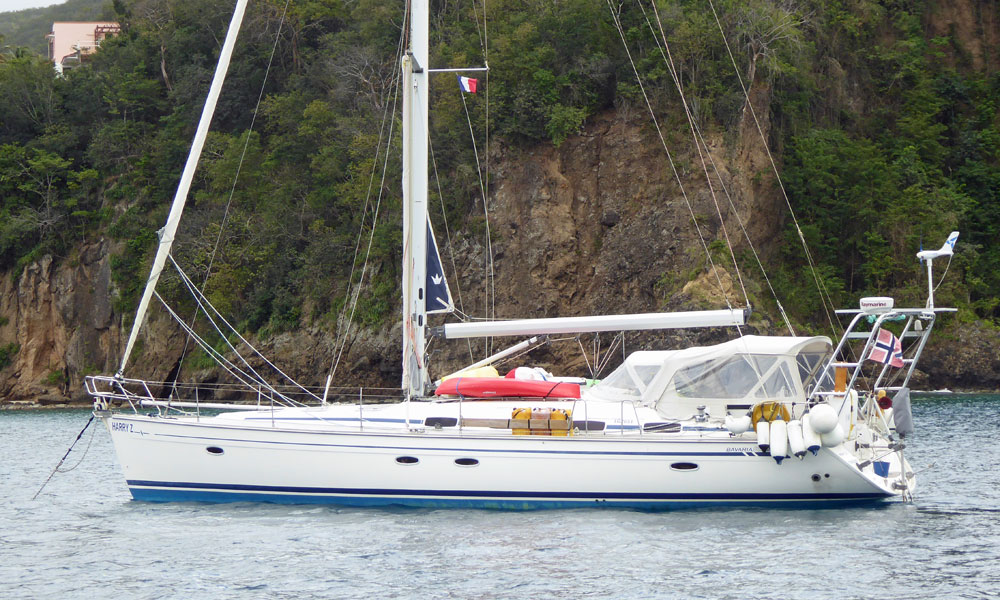 Is this 50 foot cruising boat a better home for your capital than an interest-earning bank account? If you're a sailor, of course it is!
Is this 50 foot cruising boat a better home for your capital than an interest-earning bank account? If you're a sailor, of course it is!Table of Contents
The Dream, The Reality, & the Bank Account
There’s a well-worn joke among sailors that the two happiest days of boat ownership are the day you buy the boat and the day you sell it. While it’s a bit cynical, it speaks to a fundamental truth: the costs of keeping a sailboat are often a sobering reality check for the dreaming sailor.
As an active member of the Yachting Journalists Association (YJA), I've had the privilege of speaking with countless sailors, from weekend racers to world-cruising liveaboards. One of the most common questions I hear from aspiring boat owners is, "What does it really cost?" My answer is always the same: it's less about the price tag and more about the ongoing commitment. The purchase of the boat is a single, large transaction. The true cost of boat ownership is a thousand smaller ones, year after year.
This article is for those of you who are dreaming, planning, and maybe even a little anxious. Let's pull back the curtain on the finances of sailboat ownership, from the predictable bills to the unexpected bombshells.
The Major Annual Outlays
These are the expenses you can, and absolutely should, budget for every single year. They are the fixed costs that keep your boat safe, legal, and in its proper place.
1. Mooring, Dockage, and Storage Fees
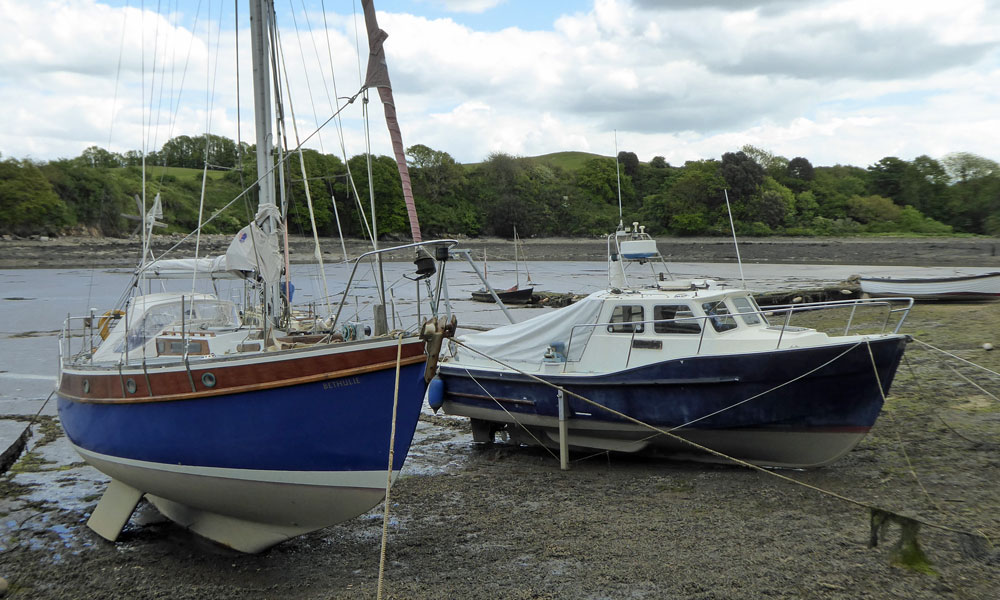 Low cost certainly, but not very convenient
Low cost certainly, but not very convenientThis is often the single largest recurring cost for most boat owners. The price you pay for a place to keep your boat is heavily dependent on three factors:
- Location: A berth in a prime location like the Solent in the UK or a sought-after marina in the Mediterranean will command a premium. A half-tide mooring in a quiet tidal river, on the other hand, will be a fraction of the cost.
- Size: Marina fees are typically calculated by the foot or meter. The longer and wider your boat, the more you pay. This is a crucial point; a 35-foot boat isn't just 10 feet more expensive than a 25-footer; it's also likely wider and heavier, putting it into a more expensive pricing tier for lifting and storage.
- Amenities: Do you want a walk-ashore berth with 24/7 security, shore power, and water, or are you happy to row out to a swing mooring with a tender? The convenience of a full-service marina comes with a significant price increase.
For a 30-foot sailboat, you could be looking at anywhere from a few hundred pounds a year for a basic club mooring to several thousand pounds for a full-service marina berth.
2. Insurance
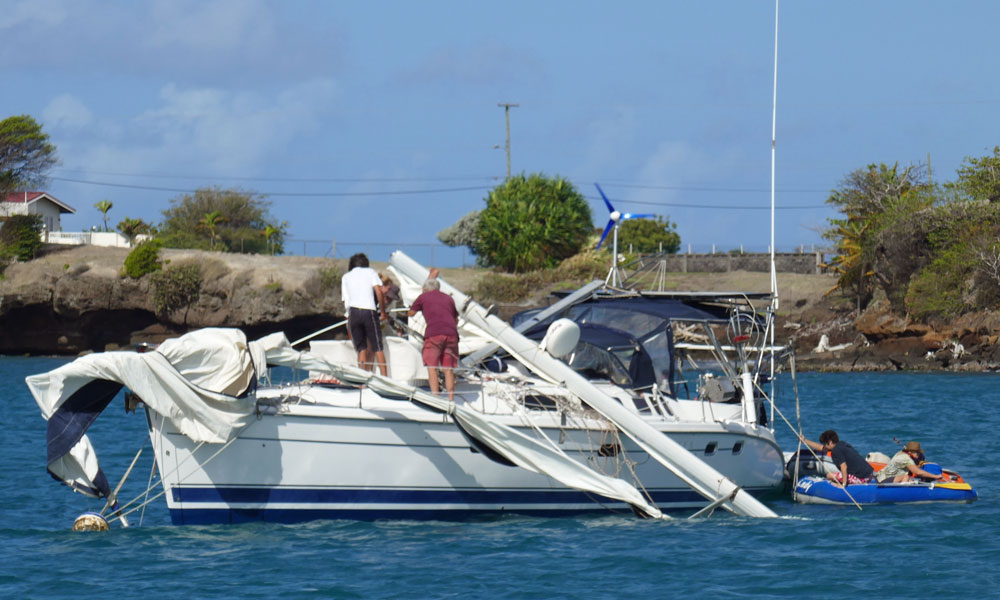 When the true value of a good marine insurance policy becomes apparent!
When the true value of a good marine insurance policy becomes apparent!Marine insurance is a non-negotiable expense. It protects you from the financial fallout of accidents, theft, and damage. While it's a critical safety net, it's often surprisingly affordable compared to car insurance, with premiums typically running between 0.5% and 1.5% of the boat's value annually.
The cost is influenced by:
- The boat's value, type, and age: More expensive, larger, and older boats can have higher premiums.
- Your experience and qualifications: A skipper with a recognized RYA or ASA certification will likely get a better rate than a novice.
- Cruising area: Insurers will charge more if you plan to sail in a hurricane zone or high-risk waters.
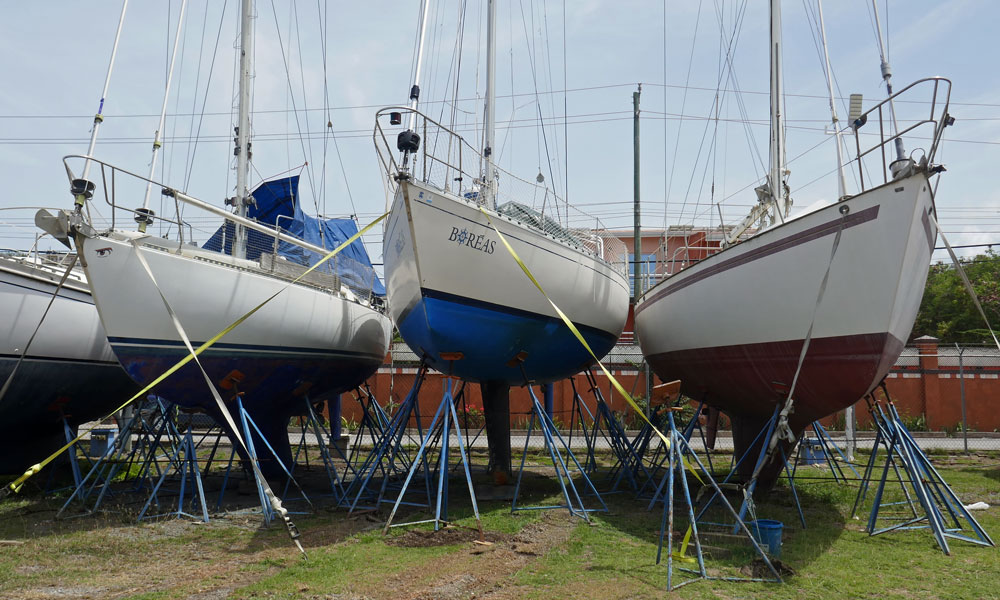 Layed-Up ashore for the Caribbean hurricane season
Layed-Up ashore for the Caribbean hurricane season3. Maintenance, Repairs, and Upgrades
This is the category that can make or break a sailor's budget. The oft-quoted figure of 10% of the boat's value annually for maintenance is a good starting point, but it's a generalization. A well-maintained, 15-year-old boat might need less intensive work than a poorly-kept 5-year-old vessel.
Routine Annual Tasks:
- Haul-out and Launch: This is a yearly ritual for most sailors to inspect the hull and perform work. Costs depend on the boatyard and the size of your vessel.
- Antifouling: Applying new antifoul paint to the hull to prevent marine growth. The cost of paint and labour is directly proportional to the boat's surface area.
- Engine Servicing: Regular oil changes, filter replacements, and impeller checks are essential to keep your engine running smoothly. This can be a DIY job or done by a professional.
- Rig and Sail Inspection: A yearly check of your standing and running rigging, as well as a thorough inspection of your sails, can prevent costly failures at sea.
Long-Term & Unexpected Costs:
This is where personal experience comes in. A few years ago, a friend of mine, a seasoned sailor, bought a beautiful 38-foot cruising yacht. He had budgeted meticulously for the annual costs. What he hadn't accounted for was the age of the standing rigging. A pre-purchase survey had flagged it as being "near the end of its life."
Within two years, he was faced with a full-rig replacement, a job that cost him close to £10,000. It was a massive, single-hit expense that devoured his contingency fund. This illustrates a critical point: some costs, like a new mast every 20-30 years, standing rigging every 10 years, and new sails every 10-15 years, are inevitable. They need to be amortized into your annual budget.
| Component | Lifespan (Cruising) | Estimated Replacement Cost (30-foot sailboat) |
|---|---|---|
| Standing Rigging | 10 years | £5,000 - £8,000 |
| Running Rigging | 10 years | £1,500 - £3,000 |
| Cruising Sails | 10-15 years | £4,000 - £6,000+ per sail |
| Engine | 20-25 years | £10,000 - £15,000+ |
| Batteries | 4-7 years | £500 - £2,000+ |
Note: All costs are estimates and can vary significantly by brand, type, and location.
The Hidden & Less Obvious Costs
These are the costs that are easy to forget when you're caught up in the romance of boat ownership.
- Depreciation: Like a car, a sailboat starts to depreciate the moment you own it. A new boat can lose up to 10% of its value in the first year alone, slowing down to 5% annually for the next few years. Well-maintained older boats, however, can hold their value surprisingly well.
- Upgrades & "Boat Bucks": You'll constantly find things you want to improve or add. A new chartplotter, a more efficient autopilot, a better dinghy and outboard... the list is endless. These "boat bucks" can be a significant drain on your wallet if you don't keep them in check.
- Safety Equipment: Lifejackets, flares, a liferaft, and EPIRBs are all essential safety items. They have expiration dates and require servicing. A liferaft, for instance, needs servicing every 1-3 years at a cost of a few hundred pounds each time.
- Travel Costs: You might need to drive for hours to get to your boat, and you'll incur costs for fuel, parking, and accommodation if you stay overnight before a long passage.
- Taxes and Fees: Depending on your location, you may be subject to sales tax, property tax, or even a luxury tax. You'll also have annual registration or licensing fees.
Summing Up
Owning a sailboat is an incredible and deeply rewarding experience. It provides freedom, adventure, and a connection to the sea that is hard to match. However, the 'True Cost of Boat Ownership' is not a single number; it's a complex equation. By understanding and budgeting for all the different variables—from the predictable mooring fees to the less obvious depreciation and the terrifyingly unpredictable major repairs—you can ensure your time on the water is spent sailing, not worrying.
Frequently Asked Questions (FAQ)
Is it cheaper to own a sailboat or a powerboat?
Is it cheaper to own a sailboat or a powerboat?
Generally, sailboats are cheaper to run. While their initial purchase price can be comparable, their fuel consumption is minimal, relying on wind power. Powerboats, especially larger ones, can have very high fuel bills.
Can I reduce my costs by doing the work myself?
Can I reduce my costs by doing the work myself?
Yes, absolutely. Doing your own maintenance, from simple engine servicing to painting and varnishing, can significantly reduce your annual outgoings. However, you must be honest about your skills and available time. Some jobs, like rigging, are best left to professionals.
What's a good contingency fund for unexpected repairs?
What's a good contingency fund for unexpected repairs?
As a rule of thumb, it's wise to have an emergency fund of at least 20% of your boat's value in a separate account. This can cover major, unexpected issues like engine failure, rigging problems, or hull damage.
Do older boats cost more to maintain than newer boats?
Do older boats cost more to maintain than newer boats?
Not necessarily. A well-maintained older boat can be a fantastic value. The maintenance costs are more a function of the boat's condition and how well it has been looked after, rather than just its age. However, older boats are more likely to need expensive, long-term replacements of major components like rigging, sails, or engines.
Sources & References
- Boats.com: Boat Ownership Costs: What You Should Budget for in a Year
- YachtWorld: How Much Does It Cost to Own a Boat? A Full Breakd
- Seanapps: What are the average costs of boat maintenance?
- Boat International: The hidden costs of owning a yacht: What every buyer should know
Recent Articles
-
Hans Christian 43: Classic Bluewater Cruiser & Liveaboard Sailboat
Dec 10, 25 04:37 AM
Explore the Hans Christian 43: a legendary heavy-displacement, long-keel sailboat. Read our in-depth review of its specs, design ratios, and suitability for offshore cruising and living aboard. -
Planning Your Sailboat Liveaboard Lifestyle: An Ocean Sailor's Guide
Dec 06, 25 05:18 AM
Seasoned sailors share their methodical risk analysis for planning a secure Sailboat Liveaboard Lifestyle, covering financial, property, and relationship risks. -
Marine Cabin Heaters: The Expert’s Guide to Comfort & Safety at Sea
Dec 05, 25 06:52 AM
Choose the best Marine Cabin Heaters for your vessel. Expert advice on diesel, paraffin, and hot water systems for year-round cruising comfort.
